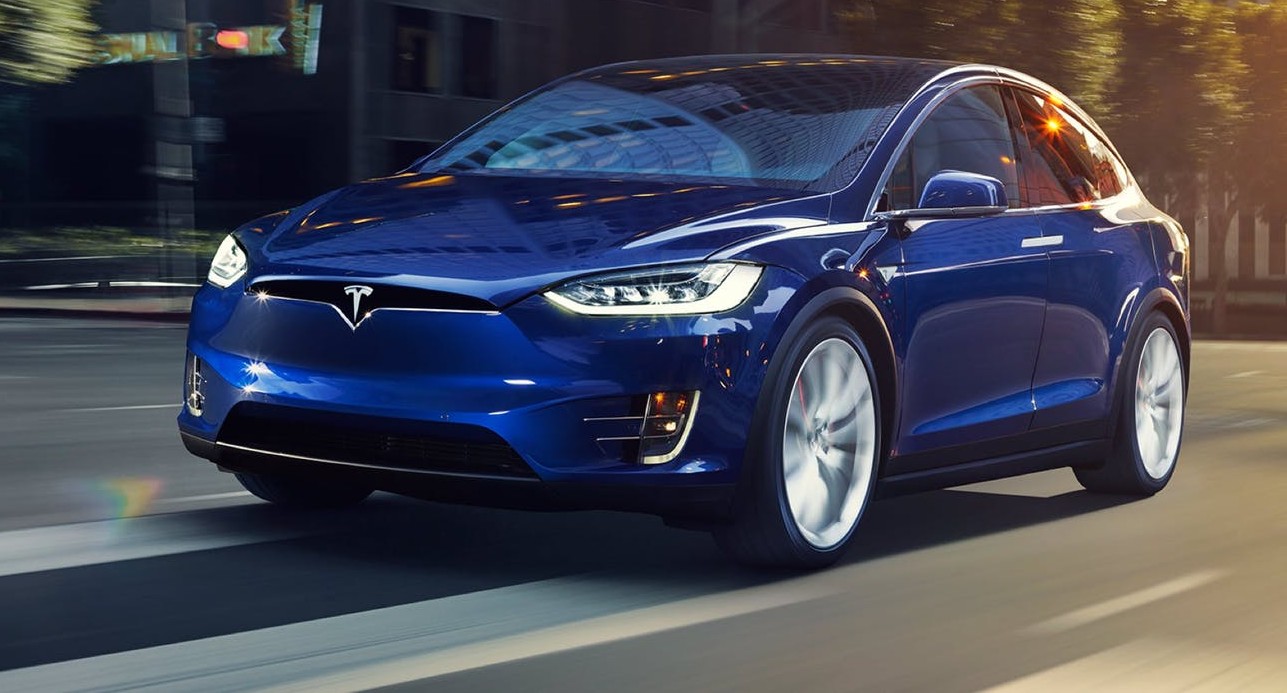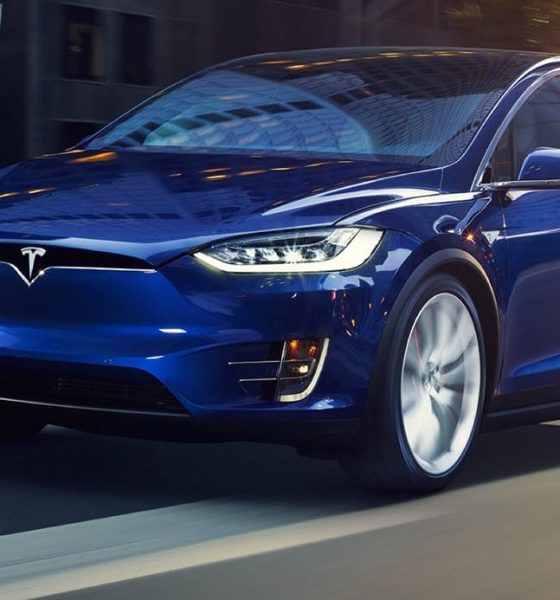

News
Tesla, other EVs required to have ‘traditional engine’ sound to meet new EU rule
Electric vehicles such as Teslas are known for being incredibly quiet. Without an internal combustion engine’s controlled explosions under the hood, electric cars are capable of operating in near-total silence. This, according to a new EU rule, will be changed soon.
A new EU rule coming into force on Monday requires new electric vehicles to be equipped with a pedestrian noisemaker. The new regulations follows concerns that low-emission vehicles such as battery-electric cars are simply too quiet for the road, making them a risk for pedestrians, cyclists, and visually-impaired individuals (among others). According to the new ruling, a car’s Acoustic Vehicle Alert System (AVAS) must be engaged when reversing or traveling below 12 mph (19 km/h).
In its ruling, the EU noted that vehicles usually back up or travel at low speeds in areas that are near people, such as city streets or crosswalks, though the new regulations does allow drivers to deactivate their vehicles’ pedestrian noisemakers as necessary. By 2021, the EU noted that all electric vehicles — not just new models coming to the market — must be equipped with an AVAS.
Quite interestingly, the ruling mentioned that the noise-emitting devices would give EVs a sound that is similar to a “traditional engine,” according to a BBC report. This particular detail is notable, since making electric vehicles sound identical to conventional cars will likely result in some levels of noise pollution, something that EVs completely avoid.
Road noises, after all, are considered the second most harmful environmental stressor in Europe, surpassed only by air pollution. The European Federation for Transport and Environment (also known as Transport and Environment or T&E), for one, notes that vehicle noises are a “major cause, not only of hearing loss, but also of heart disease, learning problems in children and sleep disturbance.”
On the flip side, pedestrian noisemakers do make it far easier for the visually impaired to detect where vehicles are on the road. This was highlighted by Guide Dogs for the Blind, a charity that has complained about the absence of sounds from low-emission vehicles. Guide Dogs welcomed the new EU ruling, though the group noted that it would be better if EVs are required to produce sounds at all speeds.
The UK’s Minister of State at the Department for Transport, Michael Ellis, noted in a statement to the publication that the ruling came about as a result of the government wanting the “benefits of green transport to be felt by everyone,” while considering the safety needs of people at the same time. “This new requirement will give pedestrians added confidence when crossing the road,” he said.
While the consideration for the visually-impaired is quite admirable in the new ruling, it is quite interesting to see the EU regulations require electric vehicles to sound like traditional gas cars. EVs, after all, could have their own unique sound, as could be seen in the Jaguar I-PACE, the Audi e-tron, and even the prototype units of the Porsche Taycan. Even Tesla seems to be working on an AVAS, as hinted at by what appears to be a speaker grille on a Model 3’s underbody. Nevertheless, when Tesla rolls out its vehicles’ pedestrian noisemakers, one could be assured that it would be designed to minimize noise pollution, and it would most likely not simulate the sounds of a “traditional” engine.

Elon Musk
Elon Musk’s X will start using a Tesla-like software update strategy
The initiative seems designed to accelerate updates to the social media platform, while maintaining maximum transparency.

Elon Musk’s social media platform X will adopt a Tesla-esque approach to software updates for its algorithm.
The initiative seems designed to accelerate updates to the social media platform, while maintaining maximum transparency.
X’s updates to its updates
As per Musk in a post on X, the social media company will be making a new algorithm to determine what organic and advertising posts are recommended to users. These updates would then be repeated every four weeks.
“We will make the new 𝕏 algorithm, including all code used to determine what organic and advertising posts are recommended to users, open source in 7 days. This will be repeated every 4 weeks, with comprehensive developer notes, to help you understand what changed,” Musk wrote in his post.
The initiative somewhat mirrors Tesla’s over-the-air update model, where vehicle software is regularly refined and pushed to users with detailed release notes. This should allow users to better understand the details of X’s every update and foster a healthy feedback loop for the social media platform.
xAI and X
X, formerly Twitter, has been acquired by Elon Musk’s artificial intelligence startup, xAI last year. Since then, xAI has seen a rapid rise in valuation. Following the company’s the company’s upsized $20 billion Series E funding round, estimates now suggest that xAI is worth tens about $230 to $235 billion. That’s several times larger than Tesla when Elon Musk received his controversial 2018 CEO Performance Award.
As per xAI, the Series E funding round attracted a diverse group of investors, including Valor Equity Partners, Stepstone Group, Fidelity Management & Research Company, Qatar Investment Authority, MGX, and Baron Capital Group, among others. Strategic partners NVIDIA and Cisco Investments also continued support for building the world’s largest GPU clusters.
News
Tesla FSD Supervised wins MotorTrend’s Best Driver Assistance Award
The decision marks a notable reversal for the publication from prior years, with judges citing major real-world improvements that pushed Tesla’s latest FSD software ahead of every competing ADAS system.

Tesla’s Full Self-Driving (Supervised) system has been named the best driver-assistance technology on the market, earning top honors at the 2026 MotorTrend Best Tech Awards.
The decision marks a notable reversal for the publication from prior years, with judges citing major real-world improvements that pushed Tesla’s latest FSD software ahead of every competing ADAS system. And it wasn’t even close.
MotorTrend reverses course
MotorTrend awarded Tesla FSD (Supervised) its 2026 Best Tech Driver Assistance title after extensive testing of the latest v14 software. The publication acknowledged that it had previously criticized earlier versions of FSD for erratic behavior and near-miss incidents, ultimately favoring rivals such as GM’s Super Cruise in earlier evaluations.
According to MotorTrend, the newest iteration of FSD resolved many of those shortcomings. Testers said v14 showed far smoother behavior in complex urban scenarios, including unprotected left turns, traffic circles, emergency vehicles, and dense city streets. While the system still requires constant driver supervision, judges concluded that no other advanced driver-assistance system currently matches its breadth of capability.
Unlike rival systems that rely on combinations of cameras, radar, lidar, and mapped highways, Tesla’s FSD operates using a camera-only approach and is capable of driving on city streets, rural roads, and freeways. MotorTrend stated that pure utility, the ability to handle nearly all road types, ultimately separated FSD from competitors like Ford BlueCruise, GM Super Cruise, and BMW’s Highway Assistant.
High cost and high capability
MotorTrend also addressed FSD’s pricing, which remains significantly higher than rival systems. Tesla currently charges $8,000 for a one-time purchase or $99 per month for a subscription, compared with far lower upfront and subscription costs from other automakers. The publication noted that the premium is justified given FSD’s unmatched scope and continuous software evolution.
Safety remained a central focus of the evaluation. While testers reported collision-free operation over thousands of miles, they noted ongoing concerns around FSD’s configurable driving modes, including options that allow aggressive driving and speeds beyond posted limits. MotorTrend emphasized that, like all Level 2 systems, FSD still depends on a fully attentive human driver at all times.
Despite those caveats, the publication concluded that Tesla’s rapid software progress fundamentally reshaped the competitive landscape. For drivers seeking the most capable hands-on driver-assistance system available today, MotorTrend concluded Tesla FSD (Supervised) now stands alone at the top.
News
Elon Musk’s Grokipedia surges to 5.6M articles, almost 79% of English Wikipedia
The explosive growth marks a major milestone for the AI-powered online encyclopedia, which was launched by Elon Musk’s xAI just months ago.

Elon Musk’s Grokipedia has grown to an impressive 5,615,201 articles as of today, closing in on 79% of the English Wikipedia’s current total of 7,119,376 articles.
The explosive growth marks a major milestone for the AI-powered online encyclopedia, which was launched by Elon Musk’s xAI just months ago. Needless to say, it would only be a matter of time before Grokipedia exceeds English Wikipedia in sheer volume.
Grokipedia’s rapid growth
xAI’s vision for Grokipedia emphasizes neutrality, while Grok’s reasoning capabilities allow for fast drafting and fact-checking. When Elon Musk announced the initiative in late September 2025, he noted that Grokipedia would be an improvement to Wikipedia because it would be designed to avoid bias.
At the time, Musk noted that Grokipedia “is a necessary step towards the xAI goal of understanding the Universe.”
Grokipedia was launched in late October, and while xAI was careful to list it only as Version 0.1 at the time, the online encyclopedia immediately earned praise. Wikipedia co-founder Larry Sanger highlighted the project’s innovative approach, noting how it leverages AI to fill knowledge gaps and enable rapid updates. Netizens also observed how Grokipedia tends to present articles in a more objective manner compared to Wikipedia, which is edited by humans.
Elon Musk’s ambitious plans
With 5,615,201 total articles, Grokipedia has now grown to almost 79% of English Wikipedia’s article base. This is incredibly quick, though Grokipedia remains text-only for now. xAI, for its part, has now updated the online encyclopedia’s iteration to v0.2.
Elon Musk has shared bold ideas for Grokipedia, including sending a record of the entire knowledge base to space as part of xAI’s mission to preserve and expand human understanding. At some point, Musk stated that Grokipedia will be renamed to Encyclopedia Galactica, and it will be sent to the cosmos.
“When Grokipedia is good enough (long way to go), we will change the name to Encyclopedia Galactica. It will be an open source distillation of all knowledge, including audio, images and video. Join xAI to help build the sci-fi version of the Library of Alexandria!” Musk wrote, adding in a later post that “Copies will be etched in stone and sent to the Moon, Mars and beyond. This time, it will not be lost.”








